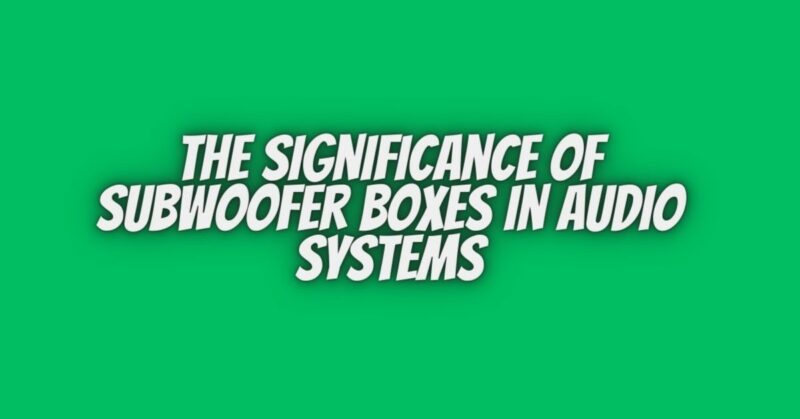Subwoofers play a crucial role in enhancing the low-frequency performance of audio systems, adding depth and impact to the sound. However, the choice of a subwoofer box can significantly influence the overall performance and quality of the bass. In this article, we’ll explore the importance of subwoofer boxes, the different types available, and how they can make a difference in the audio experience.
1. Enclosure Types:
Subwoofer boxes, also known as enclosures, come in various types, each designed to produce different bass characteristics. The three primary enclosure types are:
- Sealed (or Closed) Enclosures: Sealed enclosures provide a tight and controlled bass response. They are suitable for those who prioritize accuracy and precision in low-frequency reproduction. Sealed boxes are often chosen for their compact size and simplicity.
- Ported (or Vented) Enclosures: Ported enclosures are designed with a vent or port that allows the free flow of air. This design enhances the efficiency and output of the subwoofer, producing louder and more resonant bass. Ported boxes are favored for applications where a more pronounced and impactful bass is desired.
- Bandpass Enclosures: Bandpass enclosures feature both sealed and ported chambers, creating a design that emphasizes specific frequency ranges. These enclosures are known for their ability to deliver powerful and focused bass within a narrow frequency band. Bandpass boxes are often used for specific music genres or applications.
2. Impact on Bass Response:
The choice of subwoofer box has a direct impact on the bass response of the subwoofer. Here’s how different enclosure types affect bass characteristics:
- Sealed Boxes: Provide tight and accurate bass with a quick transient response. They are suitable for music genres that demand precision, such as jazz and classical.
- Ported Boxes: Offer louder and more resonant bass, making them ideal for genres like hip-hop and electronic music. Ported enclosures are also more efficient, requiring less power for higher volume levels.
- Bandpass Boxes: Emphasize specific frequency ranges, delivering powerful bass within a limited spectrum. They are often chosen for applications where a certain frequency band needs to stand out.
3. Size and Space Considerations:
The physical dimensions of the subwoofer box can impact its suitability for certain spaces and applications. In-car audio systems, for example, may require compact enclosures that fit within the available space. On the other hand, home theater setups may have more flexibility in accommodating larger enclosures.
4. Custom vs. Prefabricated Boxes:
Another consideration is whether to opt for a custom-built subwoofer box or a prefabricated one. Custom boxes allow for precise tuning of the enclosure to match the specifications of the subwoofer, maximizing performance. Prefabricated boxes are convenient and may offer a cost-effective solution, but they may not be as tailored to the specific requirements of the subwoofer.
5. Material and Construction:
The material and construction of the subwoofer box can impact its durability and ability to resist vibrations. High-quality materials and solid construction help minimize unwanted resonances and contribute to cleaner bass reproduction.
Conclusion:
In the realm of audio systems, the subwoofer box is more than just a housing for the speaker—it’s a critical component that shapes the character of the bass. Whether you prioritize accuracy, resonance, or a focused frequency band, choosing the right subwoofer box can make a significant difference in the overall audio experience. Understanding the characteristics of different enclosure types and considering factors like size, construction, and customization will empower you to select a subwoofer box that aligns with your preferences and enhances the performance of your audio system.


